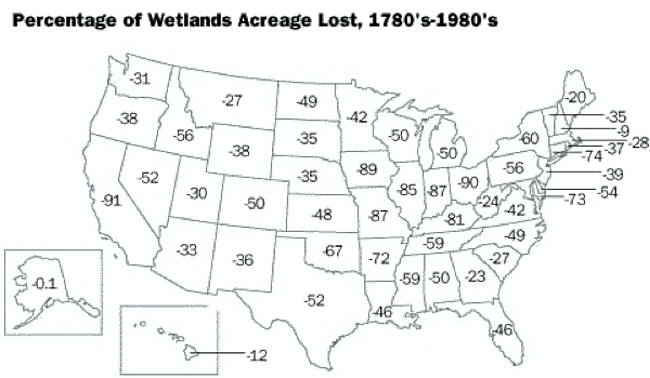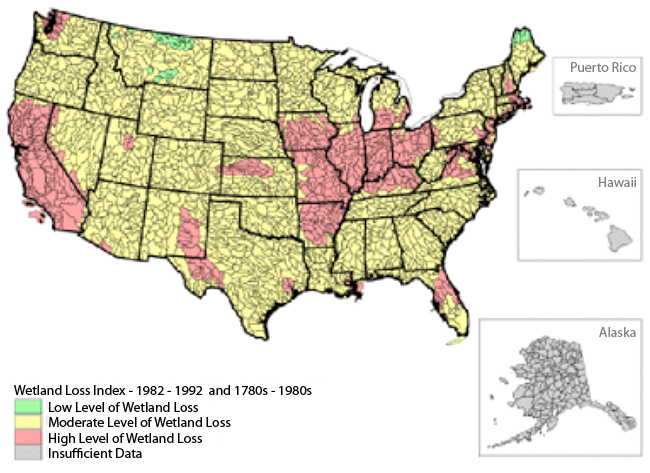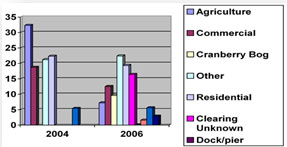
Source: Hidden Toad, Willem Siers, FreeDigitalPhotos.net
Of the original 215 million acres of wetlands existing 200 years ago in the continental United States, less than 100 million acres remain.

Source: Hidden Toad, Willem Siers, FreeDigitalPhotos.net
Twenty-two states have lost at least 50% of their original wetlands. Seven states have lost over 80% (Indiana, Illinois, Missouri, Kentucky, Iowa, California, and Ohio). Since the 1970's the most extensive wetlands loss has occurred in Louisiana, Mississippi, Arkansas, Florida, South Carolina, and North Carolina.
 Source: Percentage of Wetlands Acreage Lost, 1780s-1980s, US Geological Survey
Source: Percentage of Wetlands Acreage Lost, 1780s-1980s, US Geological Survey
Wetland losses from the 1950's to the 1970's averaged about 458,000 acres per year. Agricultural development was responsible for about 87% of this loss. In the 1990's wetland losses averaged about 117,000 acres per year, due to passage of the Clean Water Act, state and local government wetland protections, and the vigilance of community conservationists who challenge the ongoing draining and filling of wetlands, mostly for residential and commercial development.
Study the map below, it illustrates the wetland loss index.
 Source: Wetlands loss, University of Nebraska-Lincoln
Source: Wetlands loss, University of Nebraska-Lincoln

Source: Causes of wetland destruction, Massachusetts Government.
Use these charts to record information on the Wetlands Handout.
Much of wetland loss is attributable to agricultural activities, such as draining, diking and plowing of wetlands. There are other human activities that lead to wetlands destruction. Read the list below and determine which one(s) you believe may lead to the destruction of wetlands.
![]() Click the box for your correct choice (s).
Click the box for your correct choice (s).
Preventing wetlands loss is good for the economy, because filling or draining wetlands cost a lot of money in lost tourist dollars, reduction of fisheries, and repairing flood damage. It also costs a lot more to restore a wetland than to just protect it in the first place. Destroying wetlands means fewer birds and less wildlife.